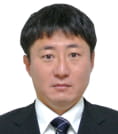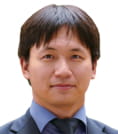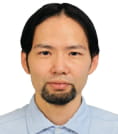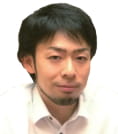- JST Home
- /
- Strategic Basic Research Programs
- /
 PRESTO
PRESTO- /
- project/
- Dynamics of Cellular Interactions in Multicellular System/
- [Multicellular System] Year Started : 2020
[Multicellular System] Year Started : 2020
Yasuko Akiyama-Oda
A molecular network that generates various stripe-forming dynamics
Grant No.:JPMJPR2041
Researcher
Yasuko Akiyama-Oda

PRESTO Researcher, Japan Science and Technology Agency
Outline
In the body axis segmentation in the spider embryo, different periodic stripe forming dynamics, including oscillation, tri-splitting, and bi-splitting, occur depending on the body regions. To elucidate a molecular network that realizes these dynamics and to understand behavior of cells that constitute the stripe pattern, I will examine cell-level gene expression by single-cell RNA sequencing. Together with data of fluorescence in situ hybridization and RNA interference, I will reconstruct spatial and temporal changes of gene expression from the early polarizing stage to the stripe forming stage and will build a network. I will also try live-imaging of stripe-forming processes.
Toshihiro Aramaki
Membrane potential mediates cell-cell interactions and regulates morphogenesis
Grant No.:JPMJPR2042
Researcher
Toshihiro Aramaki

Assistant Professor
Graduate School of Frontier Biosciences
Osaka University
Outline
During morphogenesis, the membrane potential can fluctuate even in non-neural tissues and propagate within the cell population, then function as a morphogen-like regulatory factor. In this study using zebrafish, artificial manipulation of the membrane potential with optogenetics techniques enables to elucidate molecular mechanisms of membrane potential as a morphogenic regulator. Furthermore, I will also examine the possibility that signal transduction via membrane potential is a universal cell-cell interaction in multicellular organisms.
Akihiro Isomura
Interplay between dynamic signaling gradient and genetic oscillation in tissue patterning
Grant No.:JPMJPR2043
Researcher
Akihiro Isomura

PRESTO Researcher, Japan Science and Technology Agency
Outline
In embryonic development, cells integrate the information encoded in multiple signaling pathways. Recent studies revealed dynamic patterns of signaling gradient and biological clocks, however it remains unknown how cells decode and extract the meaningful information from the intermingled signaling inputs. We are going to investigate the general rules that allow cells to decide their fates in response to dynamic signaling patterns in multi-cellular systems by developing novel technologies, including stem cell engineering, live-cell imaging, and optogenetics.
Tetsuhisa Otani
Understanding epithelial dynamics by orthogonal control of adhesion and tension
Grant No.:JPMJPR2044
Researcher
Tetsuhisa Otani

Associate Professor
Graduate School of Science
Tokyo Metropolitan University
Outline
Epithelia act as a barrier to segregate the external environment and internal body. Epithelia adopt various morphology depending on their function, and these unique shape arise through epithelial morphogenesis that takes place during development. Epithelial morphogenesis is thought to be driven by the mechanical interplay between cell-cell adhesion and cortical tension. However, cell-cell adhesion and cortical tension are interdependent with each other, and it has been difficult to experimentally perturb cell-cell adhesion and cortical tension in an orthogonal manner. In this research project, I will develop a synthetic cell-cell adhesion system which allows orthogonal control of cell-cell adhesion and tension, and will apply this technique to understand the mechanisms of epithelial morphogenesis.
Takashi Kanadome
Technological development for visualization and manipulation of cell-cell interactions
Grant No.:JPMJPR2045
Researcher
Takashi Kanadome

PRESTO Researcher, Japan Science and Technology Agency
Outline
In this project, I aim to reveal the correlation and causal relationship between biological phenomena and the surrounding signaling pathways with high spatio-temporal resolution. To accomplish this aim, I plan to develop imaging tools of cell-cell interactions mediated by cell adhesion proteins with high spatio-temporal resolution, which can be used in combination with other imaging tools of signaling pathways. I will also develop optogenetics tools to manipulate cell-cell interactions.
Dongbo Shi
The dynamics and intercellular interaction of cambium stem cells for the continuous growth of plants
Grant No.:JPMJPR2046
Researcher
Dongbo Shi

Academic Staff Member (Junior Group Leader)
Institute for Biochemistry and Biology
University of Potsdam
Outline
The continuous growth of plant body is mechanically and logistically supported by the secondary (radial) growth. Cambium stem cells generates xylem, the water conducting tissue, inwards and phloem, the nutrient conducting tissue, outwards. However, there are still many questions remain to be solved regarding to the dynamics and regulating mechanism of cambium stem cells. In this project, I will use a model plant Arabidopsis to reveal the molecular and cellular mechanism enabling the continuous growth.
Nozomu Takahashi
Long distance circadian communication initiated by plant leaves
Grant No.:JPMJPR2047
Researcher
Nozomu Takahashi

Assistant Professor
Science and Technology
Nara Institute of Science and Technology
Outline
A wide range of organisms possesses a mechanism that generates 24 hour biological rhythms so called the circadian clock, and coordinates their physiology, metabolism and behavior to diurnal environmental cycles. In plants, interaction between the circadian clocks in different parts of the body has been an intriguing mystery. This project aims to understand the long distance circadian communication between plant leaves and other organs in Arabidopsis, by developing a new protocol combining leaf-micrografting and bioluminescence based techniques. This project also explores mobile circadian signals through the multi-omics analyses of phloem sap, and further attempts to decipher the mechanisms how mobile signals regulate the clock in distal parts.
Hiroaki Norimoto
Cellular mechanism of sleep and hibernation
Grant No.:JPMJPR2048
Researcher
Hiroaki Norimoto

Associate Professor
Graduate School of Medicine
Hokkaido University
Outline
I focus principally on sleep and hibernation, combining experiments, quantitative analysis and modeling techniques. I will use “simpler” experimental systems such as the brains of reptiles to facilitate the identification, mechanistic characterization and computational description of functional principles.
Kotaro Fujii
The spatiotemporal landscape for the accuracy of protein synthesis in mammalian development and disease
Grant No.:JPMJPR2049
Researcher
Kotaro Fujii

Assistant Professor
College of Medicine
University of Florida
Outline
Control of gene expression with exquisite temporal and spatial precision enables cells to “know” where they are and what they will become. Although producing and maintaining a functional proteome is also critical, and the protein production step, mRNA translation, is the most error prone step for gene expression, the importance of translation fidelity for mammalian development, aging, and tissue homeostasis is largely unknown. This research envisions delineating the landscape of the “Translatome,” specifically in the quality of synthesized proteins. Given that the loss of homeostasis of the proteome and accumulation of protein aggregates is the hallmark of aging and neurodegenerative diseases, this research program will unravel novel impacts of spatiotemporal specificity and fidelity of protein synthesis.
Kohji Murase
Dynamics of intercellular communications in plant self incompatibility
Grant No.:JPMJPR204A
Researcher
Kohji Murase

PRESTO Researcher, Japan Science and Technology Agency
Outline
To analyze the dynamics of intercellular communications in plant self incompatibility, MD simulation and pattern analysis about the interactions of self incompatibility determinants are performed. Via the analyses, important residues for haplotype specific interactions will be determined. From these experimental data, a novel model of self or nonself discrimination in plant self incompatibility will be established with supporting data from molecular and biochemical experiments.
Yusuke Morimoto
Studies on the electrochemical potential to regulate cellular individuality and collectivity
Grant No.:JPMJPR204B
Researcher
Yusuke Morimoto

Professor
Faculty of Computer Science and Systems Engineering
Kyushu Institute of Technology
Outline
Electrochemical potentials have essential roles in many biological functions. To understand the role of electrochemical potentials at the single cell level, this project performs comprehensive quantitative analysis of intracellular ion concentrations in multicellular systems using highly sensitive fluorescence imaging. This project also develops methods to control intracellular ion concentrations using optogenetic techniques.
Masakazu Yamazaki
A novel mechanism of planar cell polarity
Grant No.:JPMJPR204C
Researcher
Masakazu Yamazaki

Professor
Graduate School of Engineering Science
Akita University
Outline
Many epithelial tissues develop the coordinated polarity of cells in the tissue plane, which is orthogonal to the axis of apico-basal polarity. This phenomenon is referred to as planar cell polarity (PCP). Genetic studies in model organisms including Drosophila identified many genes that are required for PCP establishment. The molecular mechanism underlying PCP, however, remains unclear. In this project, using fly genetics, live imaging and mathematical modeling, I will elucidate a novel mechanism of PCP in Drosophila.
Keisuke Yonehara
Establishment of basic technology for contactome analysis
Grant No.:JPMJPR204D
Researcher
Keisuke Yonehara

Professor
National Institute of Genetics
Research Organization of Information and Systems
Outline
In this project, I will develop a fundamental technology to analyze the sum of cell-cell contacts (defined as contactome) by combining bacterial peptidyltransferases and viral infection control technology. This will enable novel experimental approaches such as anterograde trans-synaptic tracing and comprehensive identification of transiently interacting cells, which have not been possible in the past. Using these techniques, I will comprehensively reveal dynamic spatio-temporal interactions among cells in the mammalian central nervous system.













